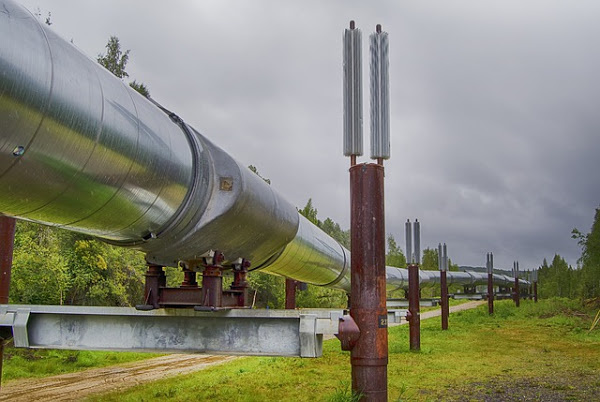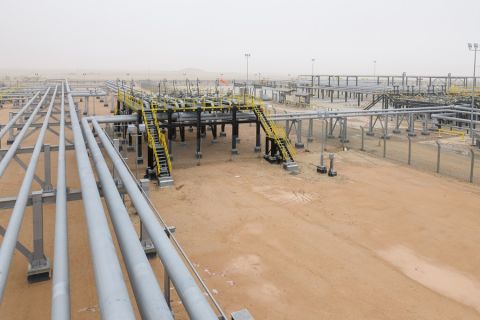
collaboration between the construction industry and energy industry is an efficient solution to providing more job openings, lucrative projects, and an opportunity to take both industries to a higher level. (Source: Shutterstock.com)
Oil and natural gas are the most important energy sources for the everyday lives of Americans. With that in mind, companies are using advanced drilling and fracturing techniques to harness more oil and gas resources. They can be found trapped within shale formations below ground, and these untapped resources are vital for the future. The construction industry is expected to continue using these methods for the next 20 years and secure enough energy both for everyday lives and various projects all over the states.
Below is more on the energy outlook and key trends impacting the construction industry.
Energy trends in 2021
U.S. President Joe Biden’s first 100 days of oil and gas actions clearly show that he has serious plans about energy consumption and usage. At the same time, the COVID-19 global pandemic is substantially affecting the construction industry. The energy trends that will be active in 2021 are:
- Growth and increased use of digital technologies;
- Exploring new markets;
- Strengthening supply chains; and
- Focusing on untapped resources of oil and gas.
These trends will directly affect energy use in the construction industry and create opportunities in various areas.
Technology trends that drive energy use
Without advancement in technology, the construction industry will not be able to push forward. One of the most popular trends is using IoT solutions. As an example, oil rigs use meteorological equipment to predict the weather. With the help of smart stations, they can collect precise data more quickly.
IoT also helps the automation process in construction and can minimize delays. When we consider how delays are a common problem in this industry and can create additional expenses or pause projects for months, every saved second plays a role.

Challenges in the construction industry
Currently, there is a shortage of young talent in the construction industry. In the past five years, the construction workforce has been moving toward the energy sectors because of better opportunities. However, now is the time that the energy and construction industries join forces with the goal of building a better future.
The idea is to attract young professionals with enticing job opportunities. The main focus should be on the use of technological solutions. Besides helping the construction industry move forward, it also opens unexplored energy markets. The range of jobs quickly grows, and people from different sectors can find a way into the construction industry.
Furthermore, it is crucial to think about raising the stakes to retain new talent. Competitive base salaries and incentive programs come to mind. Higher bonus payouts and compensations are always an excellent way to show employees you care. Keep in mind that the energy sector has an advantage here, thanks to the popularity and opportunities it offers. That is just one more reason why the construction industry must learn about these energy trends.
Additionally, construction costs are on the rise. The way businesses operate needs to change in order to avoid delays and people leaving their jobs. The labor pressure is high, and new and exciting job openings might help alleviate that pressure quickly.
Energy hotspots
The competition for resources is becoming more and more fierce, primarily because of how limited they are.
The best way for the construction industry to move forward is to concentrate on projects in the most prominent hubs in the U.S. that focus on jobs related to the energy industry. States like Texas and California are home to many energy companies, and they provide fertile ground for energy-related construction projects, like gas and oil pipelines.
This collaboration between the construction industry and energy industry is an efficient solution to providing more job openings, lucrative projects, and an opportunity to take both industries to a higher level.
Furthermore, now is the time to form strong partnerships between competitor companies. The idea is to complete projects that build economic and financial strength, not only for the companies but also for the country.
What’s next for the construction and energy industries?
The importance of the oil and gas pipeline infrastructure plays a crucial role in the future of construction and energy industries. The oil market has recovered in the past year following the pandemic. The demand is high, and it is crucial to think about future projects. These projects will not only help in supplying energy to homes and helping people in daily activities but will also help the construction industry grow. New job openings will attract a younger workforce and strengthen the industry by offering exciting opportunities and engaging careers.
Recommended Reading
US Refiners to Face Tighter Heavy Spreads this Summer TPH
2024-04-22 - Tudor, Pickering, Holt and Co. (TPH) expects fairly tight heavy crude discounts in the U.S. this summer and beyond owing to lower imports of Canadian, Mexican and Venezuelan crudes.
What's Affecting Oil Prices This Week? (April 22, 2024)
2024-04-22 - Stratas Advisors predict that despite geopolitical tensions, the oil supply will not be disrupted, even with the U.S. House of Representatives inserting sanctions on Iran’s oil exports.
Association: Monthly Texas Upstream Jobs Show Most Growth in Decade
2024-04-22 - Since the COVID-19 pandemic, the oil and gas industry has added 39,500 upstream jobs in Texas, with take home pay averaging $124,000 in 2023.
Shipping Industry Urges UN to Protect Vessels After Iran Seizure
2024-04-19 - Merchant ships and seafarers are increasingly in peril at sea as attacks escalate in the Middle East.
Paisie: Crude Prices Rising Faster Than Expected
2024-04-19 - Supply cuts by OPEC+, tensions in Ukraine and Gaza drive the increases.




